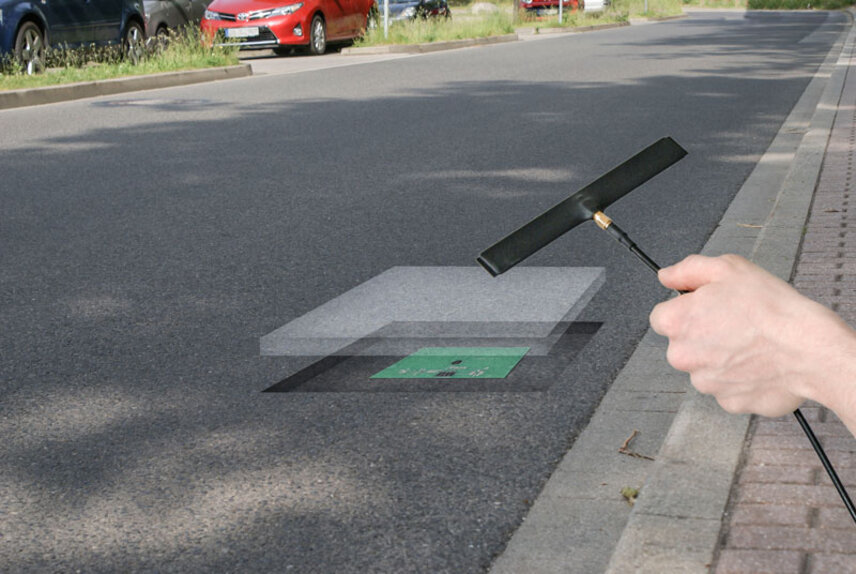Researchers from the Fraunhofer Institute for Photonic Microsystems IPMS in Dresden demonstrate that RFID transmitter-receiver systems can be used for much more than just automatic and no-touch identification or localization of objects. They have developed a freely-programmable UHF transponder tag that is fitted with sensors and that can measure physical parameters such as temperature, humidity or pressure. Such tags can, for example, be placed in the masonry or behind a drywall during the construction or renovation of buildings; once they are installed, they take regular moisture measurements to monitor possible building damages or hygiene-related issues. They can also be installed in asphalt during the construction of roads, in order to measure the sometimes significant change in temperature between the various road sections. This is particularly beneficial for winter service departments, as costs for sand/salt and service personnel can be minimized without compromising safety, while also preventing the type of asphalt damages that are normally associated with the excessive use of sand/salt.
The potential of UHF sensor transponders to improve quality along with cost and time savings and thus open the way for new applications is enormous in view of the advantages that this transponder technology offers: transponders are small, robust, easy to handle and cost-effective. In addition, they can be used not just to deliver data in real time and without contact with the assistance of a reading device for their entire service life, they can also be supplied with the required energy. A transponder integrated into the road surface could "harvest" its entire energy from a vehicle that spreads sand/salt, for example.
At Embedded World in Nuremberg, the world's leading trade fair for embedded technologies, the Fraunhofer IPMS will present UHF (Ultra High Frequency) transponders for applications that are required to bridge distances of several meters. Thanks to the flexibility of the transponder system, which consists of an antenna, transponder chip and sensor, and features an integrated I²C or SPI interface for connecting any external sensor, this Fraunhofer technology is an interesting option for a variety of possible uses.
Contact: Dr. Michael Scholles, Fraunhofer Institute for Photonic Microsystems IPMS
info@ipms.fraunhofer.de